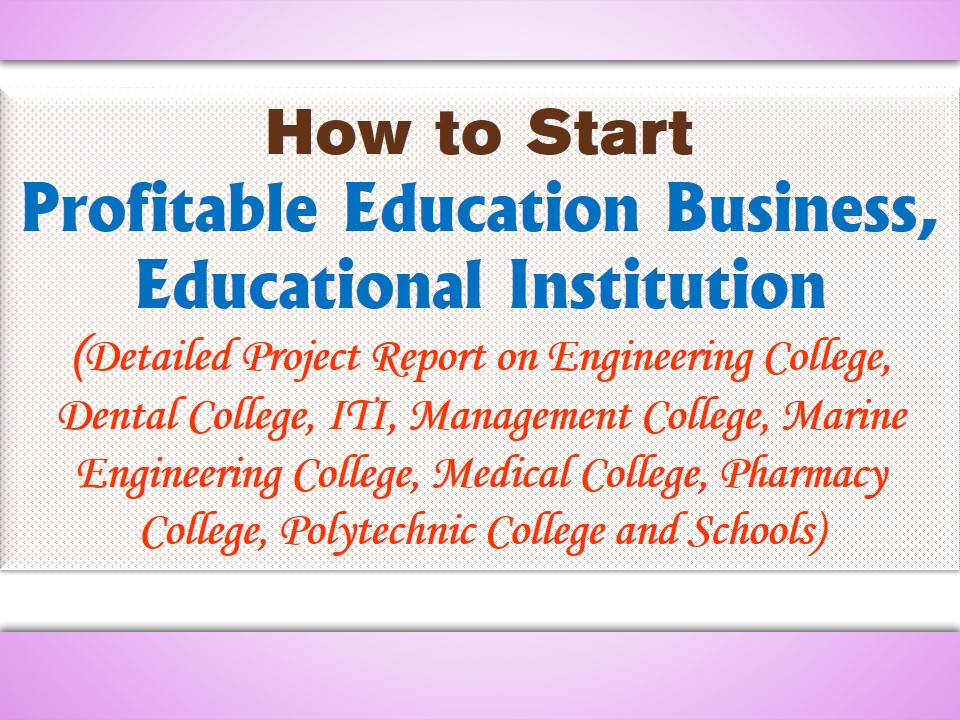
In today’s dynamic world, education is not just a necessity—it’s a thriving industry. Entrepreneurs who are passionate about teaching and have a knack for solving real-world problems can easily tap into this opportunity. With the rise of digital platforms, online learning, and skill-based courses, launching a profitable education business has never been more achievable. Whether you are targeting school students, college learners, or working professionals, the scope is vast, and the potential for success is high.
See Also : Metal & Chemical Extraction
Key Steps to Start a Profitable Education Business
To succeed in this booming sector, you must follow a well-structured process. Let’s break down the essential steps to build and scale a profitable education business from scratch.
1. Identify a Niche with High Demand
First, find a niche where learners are actively looking for help or improvement. Popular niches include coding, language learning, exam preparation, soft skills, financial literacy, and career development. Instead of targeting everyone, narrow your focus. For example, teaching English to working professionals in Tier 2 cities or offering data science for commerce students could work well.
Choosing a niche helps you stand out in a crowded market. You will understand your audience better and create solutions that match their expectations.
2. Conduct Thorough Market Research
Before developing your product or service, study your target audience. Understand their learning styles, pain points, budget, and goals. Use surveys, forums, competitor analysis, and social media to collect insights. This information will shape your content, pricing model, and marketing strategy.
Additionally, identify existing players in your niche. Look at what they do well and where they fall short. Your business should solve a gap that others haven’t addressed effectively.
3. Choose the Right Business Model
There are many ways to operate a profitable education business. Choose a model that aligns with your strengths, investment capability, and long-term goals. Some popular education business models include:
-
Online courses: Offer video courses on platforms like Udemy, Teachable, or your own website.
-
Live classes: Use Zoom, Google Meet, or proprietary tools to conduct real-time lessons.
-
Subscription models: Provide ongoing content and community access for a monthly fee.
-
Coaching and mentoring: Offer personalized guidance and feedback to learners.
-
Franchise model: If you plan to expand offline, consider the franchise route to reach more locations.
Pick one model or blend multiple formats for more flexibility.
4. Build High-Quality Educational Content
Content quality makes or breaks your business. Learners will only pay if they find value in your lessons. Structure your content in simple modules. Use clear language, real-life examples, and practical exercises. Add quizzes, assignments, and certifications to improve engagement.
If you’re not an expert in the subject, collaborate with qualified instructors. Record videos with good lighting and sound. Supplement video content with e-books, cheat sheets, and worksheets. Keep updating your content to match industry trends.
5. Create an Online Presence
In the digital era, your online presence is your storefront. Develop a website that clearly explains your offerings. Add a blog to showcase your expertise and help with SEO. Include success stories, testimonials, and course previews to build trust.
Use platforms like YouTube, Instagram, and LinkedIn to share tips and create a personal brand. Regular social media content builds community and helps you attract leads organically. Email newsletters and webinars are also effective tools for long-term engagement.
6. Select the Right Technology
Invest in reliable tech to deliver your lessons smoothly. Use a Learning Management System (LMS) that lets students access content, track progress, and interact with teachers. Choose tools that are mobile-friendly, since many users prefer learning on phones.
For video hosting, tools like Vimeo or YouTube (private listings) work well. Platforms like Thinkific, Kajabi, and LearnWorlds help you create branded course websites without technical skills. Make sure the tech is scalable and secure.
7. Design a Pricing and Sales Strategy
To run a profitable education business, pricing must reflect both the value you offer and your audience’s spending capacity. Test different price points. You can offer:
-
Free trials to increase trust
-
One-time payments for lifetime access
-
Installments to reduce entry barriers
-
Tiered pricing for different content levels
Pair your pricing with strong sales tactics. Offer limited-time discounts, use email funnels, and run ads targeting specific pain points. Promote early-bird deals for new courses or certifications.
8. Implement Effective Marketing Campaigns
No matter how great your content is, you need marketing to reach people. Focus on inbound marketing—use SEO to rank on Google for keywords your audience searches. Regularly publish helpful blogs, free videos, and lead magnets.
Also invest in paid ads on Google, YouTube, and Facebook. Retarget users who visited your site but didn’t convert. Partner with influencers in your niche to expand your reach. Don’t underestimate the power of word-of-mouth. Satisfied learners will recommend your course to others.
9. Measure Performance and Improve Constantly
Track metrics to understand what’s working and what’s not. Monitor:
-
Course completion rates
-
Website traffic and bounce rates
-
Conversion rates from leads to customers
-
Feedback and reviews
-
Revenue and customer lifetime value
Use tools like Google Analytics, Hotjar, and feedback forms. Make data-driven changes to improve content, delivery, and user experience. Constant improvement is the secret sauce to sustaining a profitable education business.
10. Focus on Retention and Long-Term Value
Acquiring a customer is expensive. So, your goal should be not just to sell a course, but to keep students coming back. Offer continuous learning paths, new modules, or advanced certifications. Build a community via private groups or forums. Host live Q&A sessions, events, or alumni meetups to create lasting engagement.
The more value students get, the more likely they’ll become repeat customers—and refer others.
Bonus Tips to Strengthen Your Education Venture
-
Legal and compliance: Register your business, get GST if needed, and handle intellectual property properly.
-
Certifications and affiliations: Partner with institutions for credibility. Offer certifications recognized by employers or colleges.
-
Customer support: Provide quick and friendly help through WhatsApp, email, or live chat. Happy learners boost your reputation.
-
Scaling options: Once stable, launch new courses, enter new niches, or expand to different geographies.
See Also : Livestock & Poultry Feed Manufacturing
Final Thoughts
Starting a profitable education business is both rewarding and impactful. You’re not only building a career for yourself—you’re helping others grow. The secret lies in combining passion with planning, content with consistency, and quality with marketing.
As education continues to evolve, the demand for flexible, affordable, and skill-based learning will grow. If you’re ready to take the first step, don’t wait. Start small, stay focused, and keep adapting. With the right mindset and strategies, your profitable education business can transform lives—including your own.





